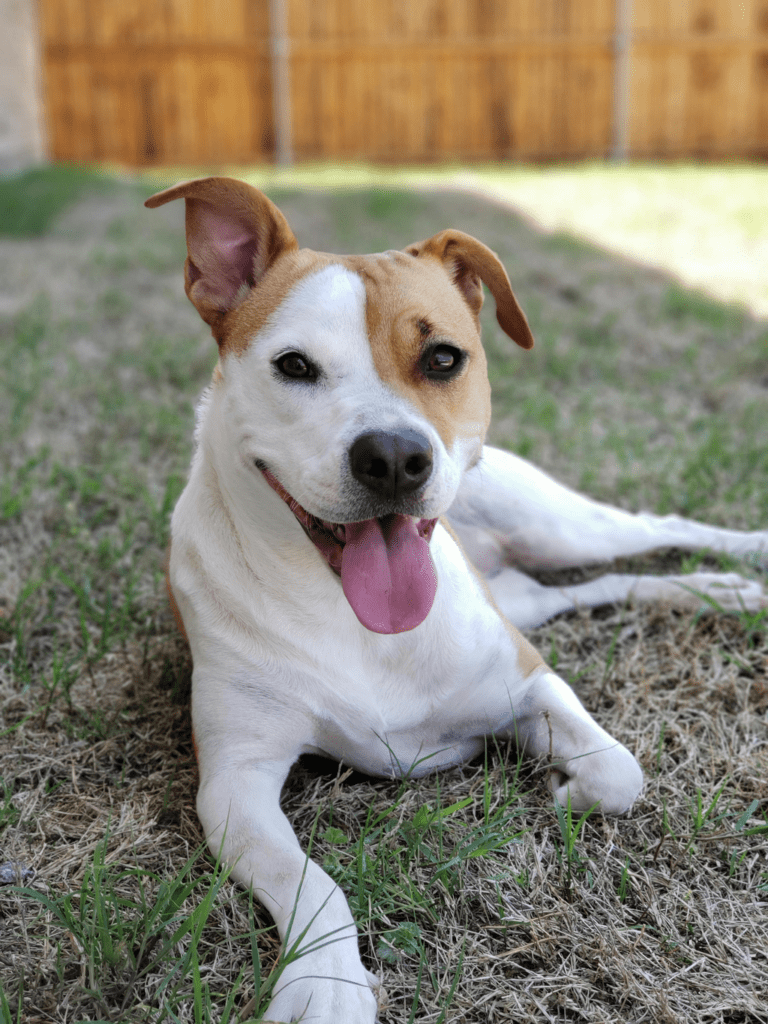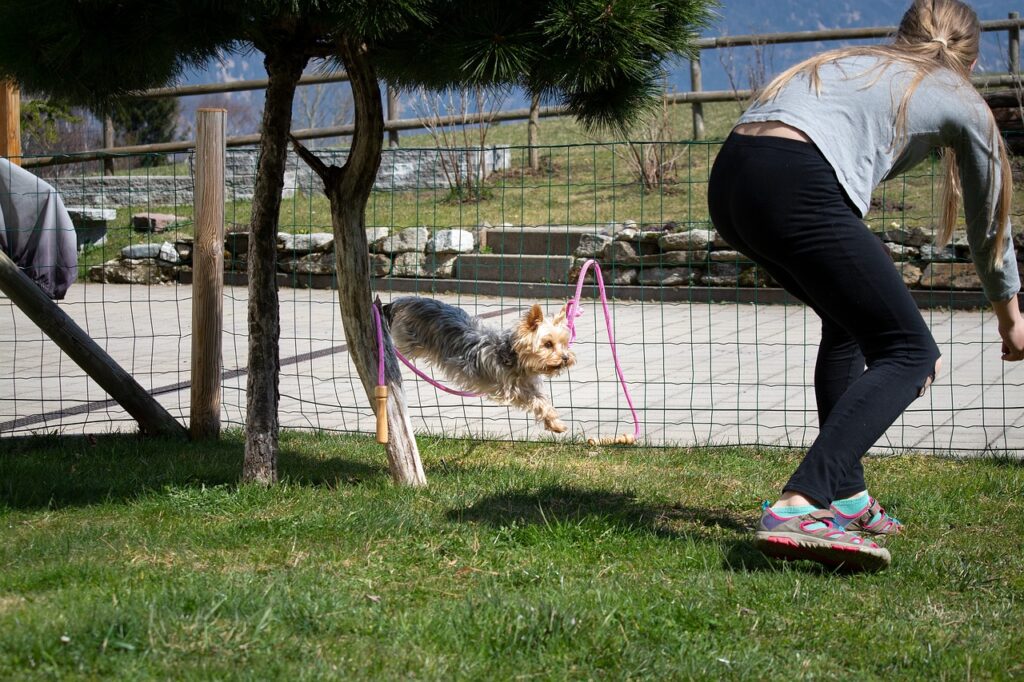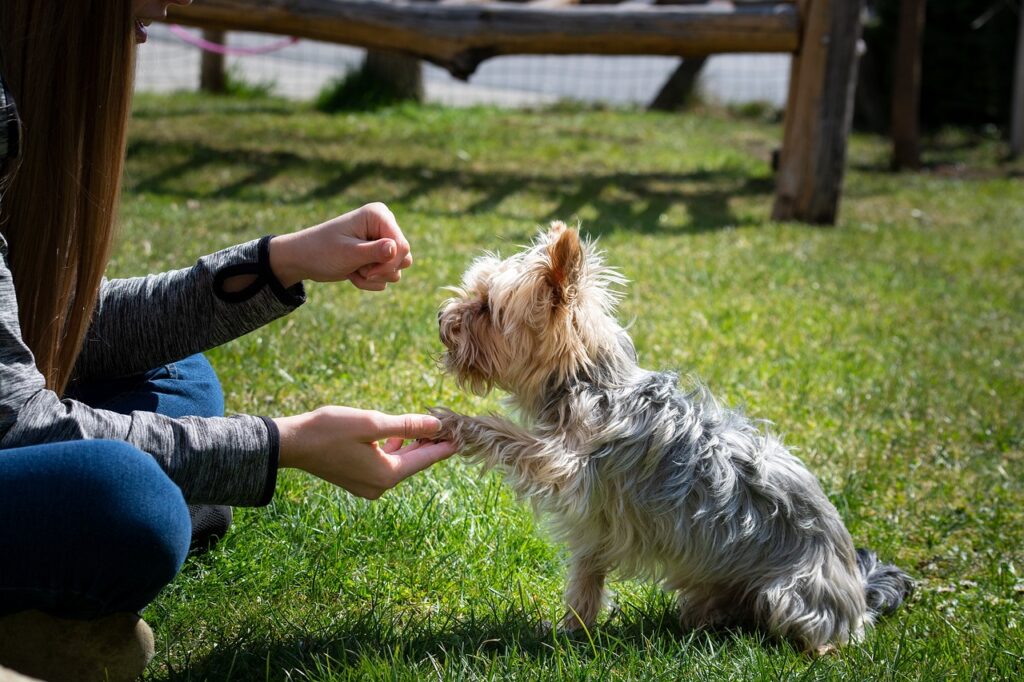Training your dog to stay within the yard is essential for their safety and your peace of mind. Here are some effective methods to help you achieve this goal.
1. Establish Boundaries
Creating clear boundaries for your yard is essential to keep your space secure and organized. Whether you have pets, children, or simply want to define your property, there are several effective methods to establish boundaries. In this section, we will explore some of the most popular options.
1.1 Install a secure fence around your yard.
One of the most common ways to establish boundaries is by installing a fence around your yard. A secure fence not only provides a physical barrier but also adds an aesthetic appeal to your property. Choose a fence design that suits your needs and complements the overall style of your home.
1.2 Use invisible fences or electric collars for added reinforcement.
Invisible fences and electric collars offer an additional layer of reinforcement for boundary control, especially if you have pets. Invisible fences use a buried wire to create an invisible boundary, and electric collars emit a harmless static correction when the pet crosses the boundary. This combination of technologies can help train your pets to stay within the designated area.
1.3 Create physical barriers using garden beds or rocks.
If you prefer a more natural approach to establishing boundaries, you can create physical barriers using garden beds or rocks. Placing raised garden beds strategically around your yard can define specific areas while adding beauty to your landscape. Similarly, well-placed rocks can act as barriers and give a visual indication of where the boundary lies.
Remember, establishing boundaries is not just about physical structures – it’s also about setting clear expectations and rules for the use of your space. Communicate these boundaries to your family members, neighbors, or anyone who may come into contact with your property to ensure they are respected.
By taking the time to establish boundaries, you can enjoy the benefits of a secure and well-defined yard. Whether you choose a fence, invisible fences, or natural barriers, find a solution that suits your needs and enhances the overall aesthetics of your property.
2. Positive Reinforcement
Positive reinforcement is a powerful tool in dog training as it encourages and motivates desired behavior. By rewarding your dog with treats and praise when they stay within the yard, you are teaching them that staying inside the boundaries is a positive and rewarding experience.
One effective method of positive reinforcement is clicker training. This involves using a small handheld clicker device that makes a distinct clicking sound. The clicker is paired with a reward, such as a treat or praise, to mark a desired behavior the moment it happens. This immediate feedback helps your dog understand which behavior is being rewarded.
To start clicker training, introduce your dog to the sound of the clicker and associate it with a treat. Click the device and immediately give your dog a treat. Repeat this several times until your dog starts to understand that the click is followed by a reward.
Once your dog is familiar with the clicker, you can use it to reinforce desired behavior. For example, if you want your dog to stay within the yard, click and reward them every time they stay inside the boundaries. This positive reinforcement helps your dog understand that staying within the yard is the behavior you want.
In addition to rewards, it is important to provide your dog with plenty of mental and physical stimulation to prevent boredom. Boredom can lead to destructive behavior as dogs try to find ways to entertain themselves. To prevent this, make sure your dog has access to toys, puzzles, and interactive games that stimulate their mind.
Physical exercise is also essential for a happy and well-behaved dog. Take your dog for regular walks, play fetch, or engage in other activities that get them moving. Not only does exercise tire out your dog, but it also provides an outlet for their energy.
In conclusion, positive reinforcement is a valuable tool in dog training. By rewarding your dog with treats and praise, using clicker training to reinforce desired behavior, and providing plenty of mental and physical stimulation, you can help your dog stay within the yard and prevent boredom. Remember, consistency and patience are key when using positive reinforcement techniques.
3. Supervised Training
When it comes to training your dog, supervision is key. Especially during the initial training period, you’ll want to keep a close eye on your furry friend to ensure they are learning and behaving appropriately. Here are some important tips to follow during supervised training:
1. Limit Movement with a Leash or Tether
Using a long leash or tether can be extremely helpful in controlling your dog’s movement during training. This will limit their freedom to roam and explore, allowing you to have better control over their actions. It also provides a sense of security for both you and your dog.
Start by attaching the leash or tether to your dog’s collar or harness and anchor it to a sturdy object or hold it firmly in your hand. Begin training in a designated area such as your backyard or a secure, enclosed space. This way, you can gradually increase their freedom as they become more proficient in following commands and staying within the boundaries.
2. Correct Attempts to Leave the Yard
Dogs are naturally curious and may try to venture beyond the boundaries of your yard. It is essential to correct this behavior early on to prevent any safety issues or potential accidents. When you notice your dog attempting to leave the yard, firmly say “no” and redirect them back into the designated area.
Consistency is key here. Repeat this command every time they try to leave and guide them back to the safe zone. It may take some time and patience, but with consistent effort, your dog will understand that leaving the yard is not allowed.
3. Use Positive Reinforcement
In addition to correcting unwanted behavior, it is crucial to reinforce positive behavior. When your dog follows commands and stays within the boundaries, reward them with praise, treats, or playtime. Positive reinforcement helps reinforce the idea that staying within the yard is desirable and rewarding.
Remember to be patient and understanding during the training process. Learning takes time, and every dog is unique. Keep the training sessions short and frequent to avoid overwhelming your dog. Gradually increase the duration of training sessions as your dog becomes more comfortable and responsive.
By following these tips and maintaining a close eye on your dog’s behavior during training, you can establish boundaries, reinforce positive behavior, and ensure their safety. Supervised training is a crucial step in helping your furry friend become a well-behaved and obedient member of your family.
4. Consistency and Repetition
Consistency and repetition are key when it comes to training your dog. By consistently reinforcing the boundaries and rules every time your dog goes outside, you’re ensuring that they understand what is expected of them and what behavior is acceptable.
One way to reinforce these boundaries is through regular training sessions. Practice training exercises and reinforce the desired behavior on a regular basis. This repetition helps to solidify the training and ensure that your dog understands and remembers what they have learned.
However, it’s important to note that training takes time and patience. Each dog is different, and it may take longer for some dogs to fully understand and comply with the rules. It’s important to be patient and persistent, even if it feels like your dog is not catching on as quickly as you would like.
During training sessions, it’s important to be consistent with your commands and cues. Use the same verbal commands and hand signals each time to avoid confusion. Consistency in your training methods will help your dog understand what is expected of them and make it easier for them to comply.
Another aspect of consistency is enforcing the rules in all situations. For example, if you have taught your dog not to jump up on people, it’s important to enforce this rule consistently with everyone they come into contact with. If you let them jump up on certain people but not others, it will only confuse your dog and make it more difficult for them to understand and comply with the training.
Repetition is also important when it comes to reinforcing good behavior. Praise and reward your dog each time they exhibit the desired behavior. This positive reinforcement will help to strengthen their understanding and motivation to continue behaving in that way.
Consistency and repetition go hand in hand when it comes to training your dog. By consistently reinforcing the boundaries and rules, and by repeating training exercises and reinforcing good behavior, you are setting your dog up for success. Remember to be patient and persistent throughout the training process, as it may take time for your dog to fully understand and comply.
5. Seek Professional Help
Training a dog can be a challenging endeavor, especially if you’re dealing with a particularly stubborn pooch. If you find yourself struggling to make progress or facing unique challenges, it might be time to seek help from a professional dog trainer. These experts have the knowledge and experience to provide personalized guidance and techniques that address your specific needs.
One of the most significant advantages of working with a professional dog trainer is their ability to tailor their approach to suit your dog’s unique personality and behavior. They understand that every dog is different and requires a customized training plan. Whether you’re dealing with aggression, fear, or obedience issues, a professional trainer will be able to identify the root cause of the problem and develop a training program that effectively targets those areas.
Professional trainers also have a wealth of experience working with various breeds and temperaments. This experience enables them to recognize patterns and behaviors that may not be immediately apparent to an inexperienced dog owner. By identifying and addressing these underlying issues, they can help you overcome training obstacles more efficiently.
Additionally, seeking professional help can save you time and frustration. A professional trainer can accelerate the training process by providing you with practical techniques and strategies that have been proven to work. They can also guide you through any challenges or setbacks you may encounter, offering encouragement and support along the way.
Another benefit of involving a professional trainer is that they can provide you with ongoing support and guidance. As you implement their techniques, you may encounter new issues or have questions about your dog’s behavior. Having someone with expertise to consult can give you peace of mind and ensure that you have the necessary tools and knowledge to continue your dog’s training journey successfully.
Remember that seeking professional help is not a sign of failure but rather a proactive step towards achieving your training goals. It shows your dedication to providing the best possible care and guidance for your furry friend. Professional assistance can make a significant difference in your training outcomes and contribute to a healthier, happier relationship with your dog.
In conclusion, if you’re facing challenges in training your dog or have a particularly stubborn pooch, don’t hesitate to seek help from a professional dog trainer. Their personalized guidance, expertise, and ongoing support can make a world of difference in your training journey. Remember that every dog is unique, and investing in professional assistance is an investment in your dog’s well-being and your own peace of mind.
Conclusion
Training your dog to stay within the yard requires patience, consistency, and positive reinforcement. By following these methods and seeking professional help if needed, you can ensure your dog’s safety and enjoy a worry-free time in your yard.
Training a dog may seem like a daunting task, but with the right approach, it can be both rewarding and beneficial for both you and your pet. By following the strategies outlined in this article, you can teach your dog to stay within the boundaries of your yard.



